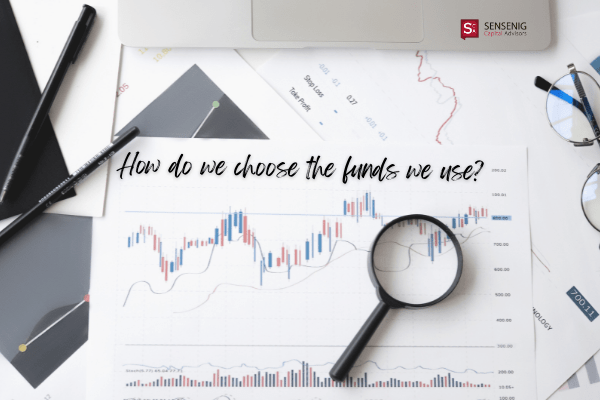Forecasters often cite a figure of 8%–10% as a likely outcome for stock market performance in the year ahead, and 2014 was no exception. As sensible as this may sound, it is worth pointing out that over the past 89 years, the S&P 500 Index and its predecessors have never delivered a total return between 8% and 10% in any single calendar year—in every case it has been higher or lower, often by a substantial amount. For example, starting in 1926, there have been 28 years with a gain or a loss in excess of 25%. Investors would do well to expect the unexpected every year.
Achieving the market rate of return in 2014 required a level of patience and equanimity that eluded many investors—individuals and professionals alike. After five years of positive equity returns, many investors were easily persuaded that stocks were dangerously overvalued and overdue for a “correction” —customarily defined as a decline of 10% or more from the previous peak.
A Wall Street Journal columnist warned in January, “The US stock market is more overvalued than it was at the majority of the past century’s peaks, according to six well-known valuation ratios.”1 Money magazine chimed in, observing that “stock prices by at least one measure are among the frothiest in history.”2 As we observed in a previous post (“CAPE Fear: Valuation Ratios and Market Timing,” September 2014), using valuation ratios to enhance returns by fiddling with the degree of equity exposure is often an exercise in frustration, and the results from 2014 offer yet another example.
Stock prices fell sharply in January, with the S&P 500 Index sliding 3.56% and the Dow Jones Industrial Average dropping 5.30%. Followers of the so-called January Indicator were quick to point out that a rocky first month often signals poor performance for the remainder of the year. The market’s weak performance in January appeared to justify the concern that stock prices were out of whack with business conditions. On February 5, aWall Street Journal reporter observed, “Increasingly, however, it looks like stock markets are off to a terrible start mainly because hopes for economic growth and the profits that go with it got too high.”3 As it turned out, stock prices had already touched their low for the year two days earlier, and the S&P 500 Index was destined to rise over 19% from February 3 through December 31.
In recent years, a number of market commentators have argued that low interest rates allegedly engineered by the Federal Reserve and the European Central Bank have artificially boosted share prices to unsustainable levels. These experts say stocks are likely to fall decisively when interest rates begin to rise again. We will defer comment on the contentious issue of asset-price manipulation for another day, but we can file away 2014 as another example of the challenges facing those who claim to have the expertise to predict market behavior. To an overwhelming degree, professional investors were confident that interest rates would rise in 2014, but the yield on 10-year US Treasury notes instead fell sharply from 3.03% at year-end 2013 to 2.19%.4 For an alternative view regarding central banks and interest rates, we refer readers to Professor Eugene Fama’s 2013 paper “Does the Fed Control Interest Rates?”5
If we could measure collective investor anxiety, it would likely have reached its peak for the year in mid-October. On October 15, the Dow Jones Industrial Average plunged as much as 460 points during the day before rallying to close with a loss of 173 points. At that point, the Dow was down 2.6% for the year while the S&P 500 clung to a slim gain of 0.76%. The selloff was front-page news the following day in the New York Times, which observed, “The party is over. Waves of nervous selling buffeted the stock market in the United States on Wednesday, after a steep sell-off in Europe. … Since their peak a month ago, American stocks have lost over $2 trillion in value, losses that may ripple through the wider economy. … The faltering global recovery after the 2008 financial crisis may now be in jeopardy, particularly in Europe.”6 What caused such a fierce selling squall? Market commentators cited selling by momentum-oriented hedge funds, fears of a weakening global economy, and gloom associated with another reported US case of the Ebola virus. Many investors braced themselves for a continuing slide in stock prices that never occurred. Year-to-date stock returns were back in the plus column the following day and kept rising through December.
While many Wall Street experts fretted all year over monetary policy and valuation ratios, companies on Main Street plodded along, generally selling more goods and services, earning larger profits, and sending bigger dividend checks to shareholders. Twenty-eight of the 30 firms in the Dow Jones Industrial Average paid a higher dividend at year-end 2014 compared to the previous year, with an average increase of 11.65%.
Stock returns in non-US markets were generally positive in 2014 but with a wide range of results. Among 45 developed and emerging markets tracked by MSCI, total return expressed in local currency ranged from 38.66% in Israel to -31.59% in Greece. Thirty-five non-US markets had positive returns, including 17 with higher returns than the US. With so many pessimistic discussions of the European economy in recent months, many investors might be surprised to learn that stocks in Belgium, Denmark, Finland, Ireland, and Sweden outperformed US stocks when expressed in local currency. Appreciation of the US dollar relative to every major currency significantly penalized net results for US investors. Even the Swiss franc, long associated with fiscal rectitude, slumped relative to the US dollar. Total return for the MSCI World ex USA Index (gross dividends) was 6.80% in local currency but -3.88% in US dollar terms.
The recent strength of the US dollar stands in stark contrast to the gloomy predictions we heard from some quarters just a few years ago. For example, in the book Aftershock, published in 2011, the authors argued that the financial crisis of 2008–2009 was “relatively small compared to the coming dollar crisis” and predicted that this “unsustainable currency bubble”7 was destined to burst with disastrous consequences.
Exchange rates fluctuate in unpredictable ways, and it would not surprise us to see such arguments resurface in a few years, particularly after a prolonged period of dollar weakness.
The year 2014 was a challenging one in many respects, but perhaps the biggest challenge was to resist the urge to dip and dart in response to the cascade of news events and opinions that suggested action of some sort was imperative for financial success.
References:
1. Mark Hulbert, “This Bull Market is Starting to Look Long in the Tooth,” Wall Street Journal, January 18, 2014.
2. Paul J. Lim, “Time to Go Lighter,” Money, January/February 2014.
3. Jon Hilsenrath, “Turnabout on Global Outlook Darkens Investor Mood,” Wall Street Journal, February 5, 2014.
4. Yahoo! Finance.
5. Eugene Fama, “Does the Fed Control Interest Rates?” The Review of Asset Pricing Studies 3, No. 2 (August 2013): 180-199.
6. Peter Eavis and Landon Thomas Jr., “Steep Sell-Off Spreads Fear to Wall Street,” New York Times, October 15, 2014.
7. David Wiedemer, Robert A. Wiedemer, and Cindy Spitzer, Aftershock (New Jersey: John Wiley & Sons, 2011).
Weston J. Wellington, a vice president with Dimensional, is another of the firm’s in-house research experts. He works closely with financial advisors in the US, Canada, Europe, Australia, and Latin America, showing them how a science-based “equilibrium” strategy is the most reliable way to achieve investment success and why their clients are unlikely to hear about this approach from the usual sources of financial advice.



